12 Wild Animals in Gabon [Wildlife in Gabon]
Want to know more about the wildlife in Gabon?
Discover 12 wild animals in Gabon in this post, as well as interesting facts about them. 🇬🇦
Learn All About Gabonese Animals
Ready to learn all about Gabonese animals?
I’ve always been fascinated by animals and by how they can be so different from one country to another. In this guide, we’ll focus on the many animals Gabon has on the land, in the sky, and underwater.
I’ve split the guide into 6 categories:
- Native animals from Gabon
- Endangered animals of Gabon
- What is Gabon national animal?
- How many animals native to Gabon?
- How many gorillas are left in Gabon?
- What are some animals you can see at the beaches in Gabon?
Let’s dive in right away with our first category!
Native Animals from Gabon
Gabon is an African country located in the western part of the continent, on the equator. It is one of the most prosperous countries in all of Africa (thanks to petroleum and private investment), and it used to be a French colony up until 1960. It is bordered by Equatorial Guinea, Cameroon, and the Republic of the Congo, and its capital and largest city is Libreville, which counts more than 703,000 inhabitants.
An interesting part of the country that I wanted to tackle is its wildlife. In light of that, I have listed the best of it, and I hope you will love learning what animals live in Gabon.
Here’s the Gabon animals list.
1. African forest elephant
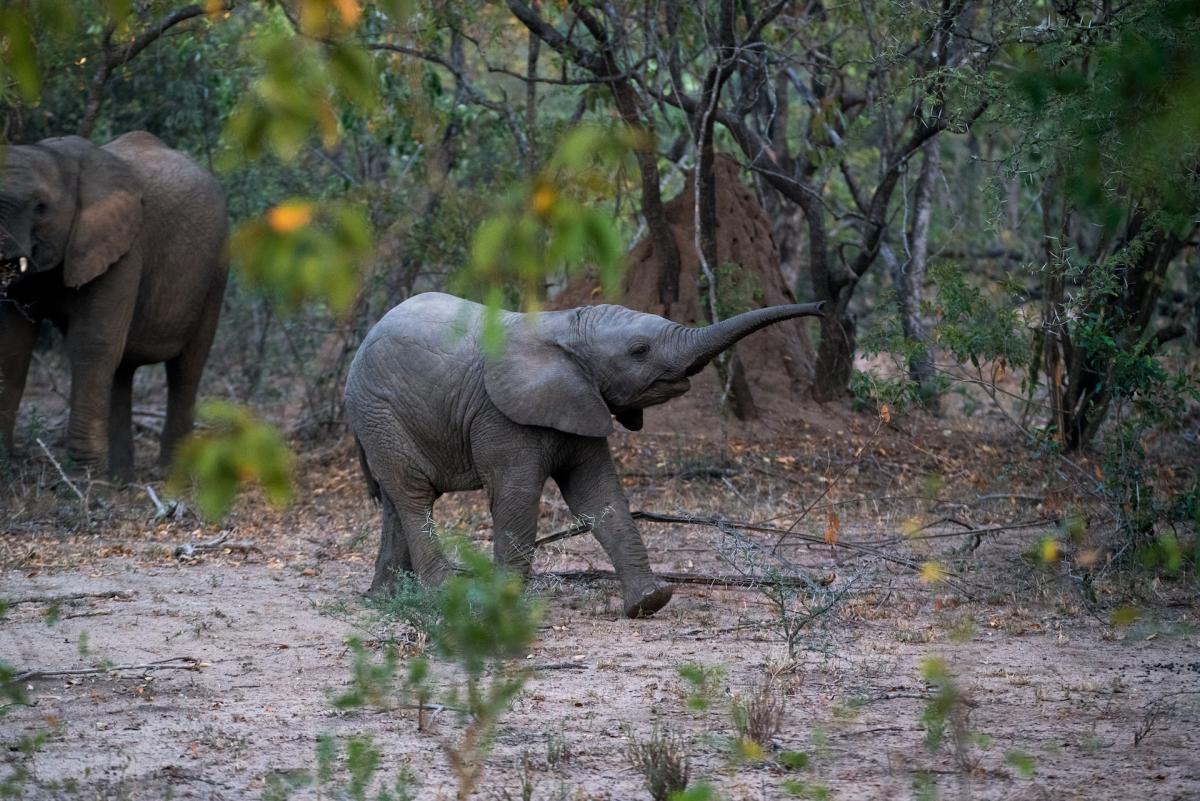
- Name: African forest elephant
- Scientific name: Loxodonta cyclotis
- Conservation status:
The African forest elephant is assuredly one of the most iconic Gabonese and even African species. It is one of two living elephant species on the continent, alongside the African bush elephant, and it is the smallest of them.
This elephant inhabits humid forests of West Africa and the Congo Basin and is critically endangered due to poaching for its meat and ivory as well as habitat loss. Interestingly enough, unlike other animals, this elephant is mostly sexually active during the night.
2. Chimpanzee

- Name: Chimpanzee
- Scientific name: Pan troglodytes
- Conservation status:
The chimpanzee, also known as the chimp, is a species of great ape native to tropical Africa. Its hair is coarse black and it has a bare face, fingers, palms, soles, and toes, and it lives in groups of 15 to 150 individuals, though smaller groups are formed during the day in order to forage.
This primate lives in a male-dominated hierarchy, where conflicts are solved without violence, generally. It is very intelligent and can use and modify tools to find honey, ants, and even water.
3. Lion
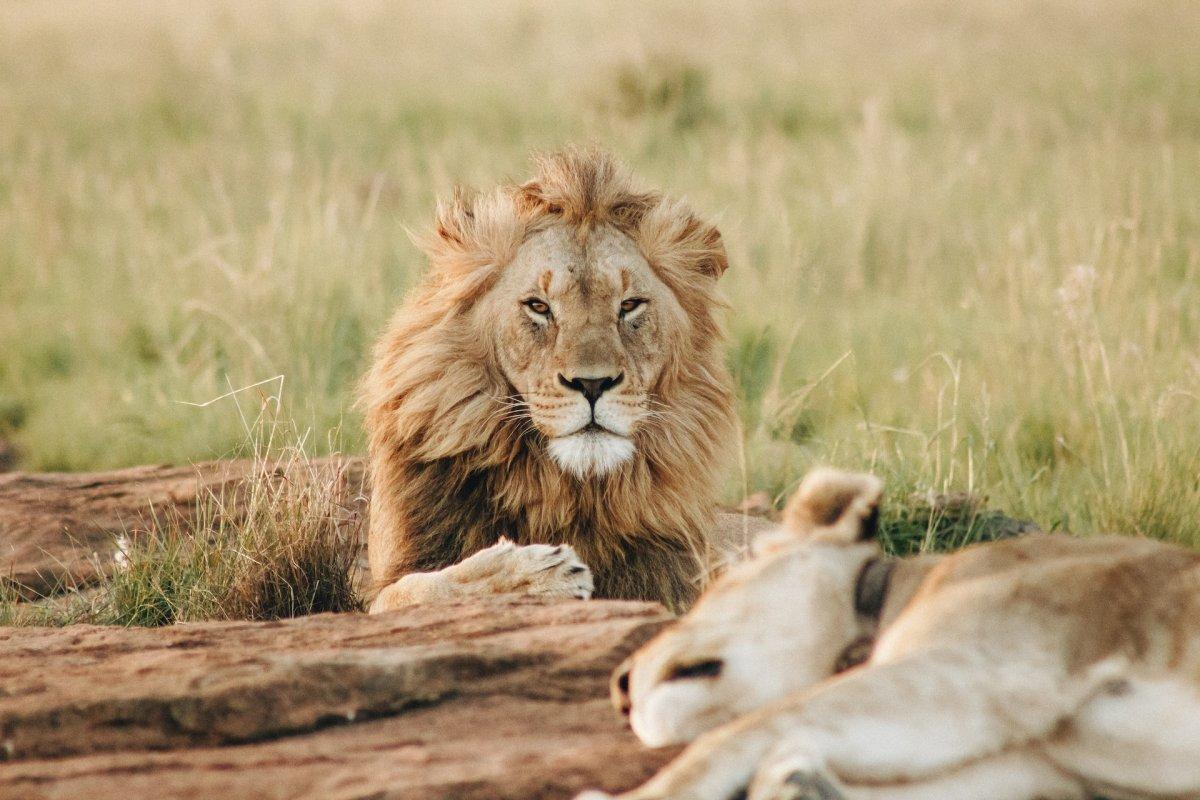
- Name: Lion
- Scientific name: Panthera leo
- Conservation status:
The king of animals is also present in Gabon, which is definitely a fantastic country in terms of wildlife. It is a large species of wild cat native to Africa and India, and it has a muscular body with a short, rounded head.
The lion lives in savannas, grasslands, and shrublands, and is more diurnal than other wild cats. However, when persecuted, it easily adapts and becomes active at night.
4. Spotted hyena
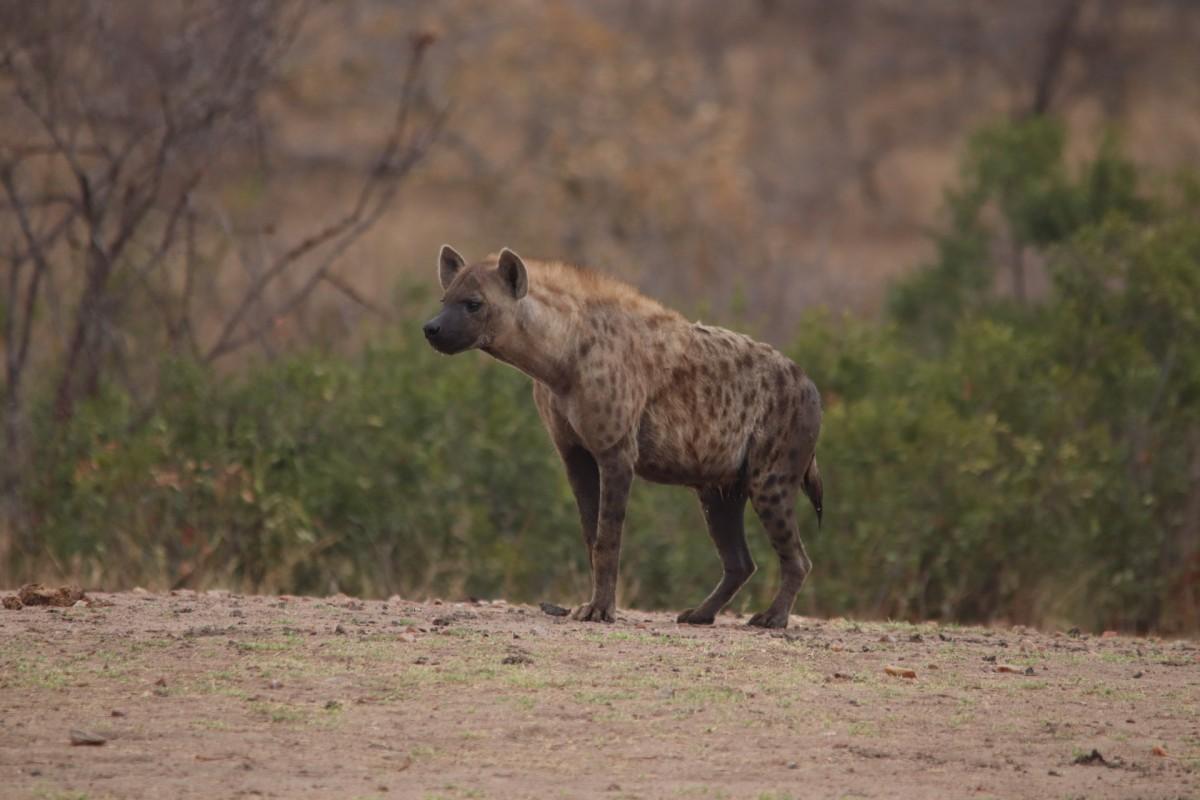
- Name: Spotted hyena
- Scientific name: Crocuta crocuta
- Conservation status:
The spotted hyena, widely known as the laughing hyena, is a species of hyena native to sub-Saharan Africa, though it may have originated in Asia. Now, thanks to its wide range and large numbers of about 27,000 to 47,000 individuals, it is considered of least concern, but it is experiencing declines outside of protected areas because of poaching and habitat loss.
This hyena is extremely successful as an animal, being the most common large carnivore on the continent, which is due to its opportunism and adaptability.
5. Giant pangolin
- Name: Giant pangolin
- Scientific name: Smutsia gigantea
- Conservation status:
The giant pangolin, as its name suggests, is the largest species of the pangolin family. It inhabits western Africa, along the equator, and feeds almost exclusively on termites and ants.
Though it is quite heavy, the giant pangolin can walk on two legs by using its tail as a balance. It has a strong sense of smell and large anal glands that may be important to animal communication. This species lives in savannas, forests, and rainforests, in areas with large termite populations and bodies of water.
6. Gaboon viper
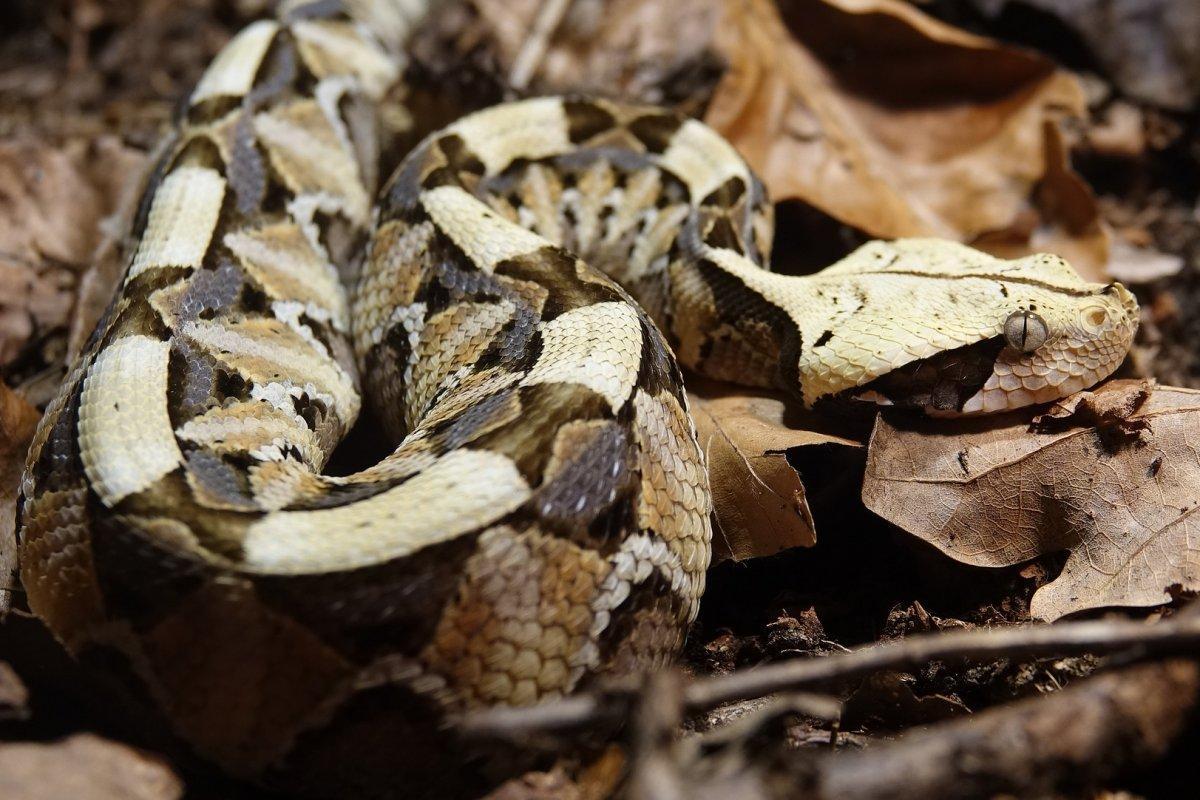
- Name: Gaboon viper
- Scientific name: Bitis gabonica
- Conservation status:
Despite its name, the Gaboon viper is actually not endemic to Gaboon, but can actually be found in lots of sub-Saharan countries, usually in the rainforest or the savanna. Similarly to other vipers, it is venomous, and it has the longest fangs of any venomous snake, reaching up to 5 cm / 2 inches in length, as well as the highest venom yield of any snake!
This viper is mostly nocturnal and is placid and slow-moving, but usually extremely well camouflaged, making it a dreadful predator.
7. Western gorilla
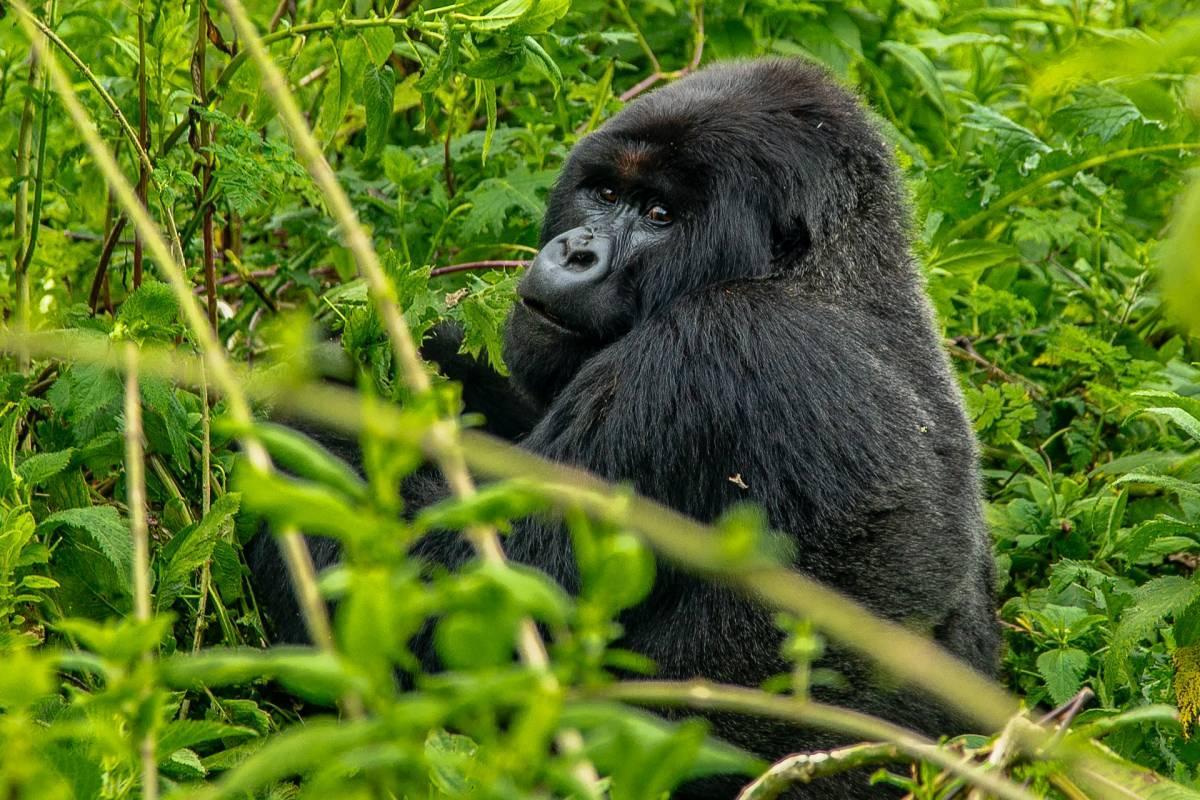
- Name: Western gorilla
- Scientific name: Gorilla gorilla
- Conservation status:
The western gorilla is a species of great ape native to Africa. It is exceptionally large and strong, and there are about 95,000 individuals left in the world, and only 250 to 300 of the Cross River gorilla subspecies, endemic to the Cameroon-Nigeria border region.
Sadly, this species suffers from many threats such as the Ebola virus, which decimated about a third of its global population in only 25 years but also poaching, civil wars, and habitat loss because of commercial logging.
8. Leopard
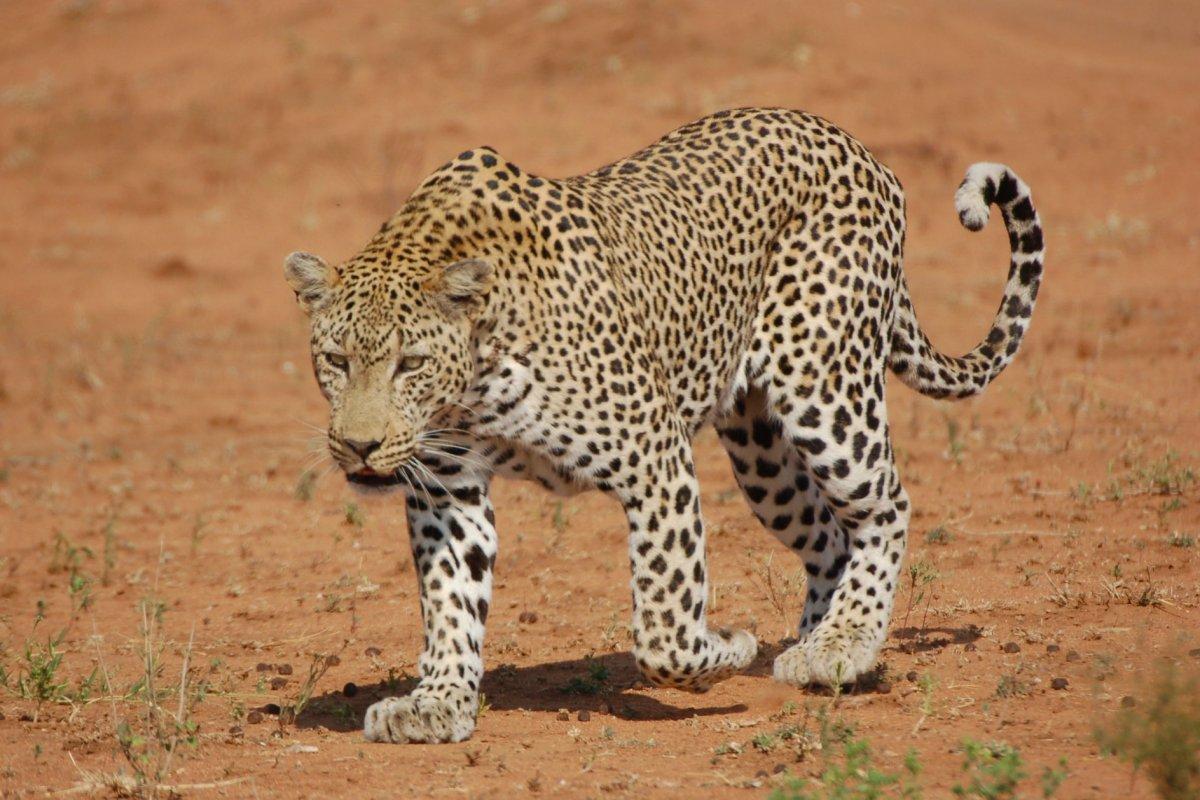
- Name: Leopard
- Scientific name: Panthera pardus
- Conservation status:
The leopard is another species of large wild cat native to sub-Saharan Africa, southern Russia, the Indian subcontinent, and East, West, and Central Asia. It is threatened by habitat loss and fragmentation as well as poaching, which is why it is listed as vulnerable for now.
In the past, the leopard was even more widespread, but it is now locally extinct in countries such as South Korea, Morocco, Vietnam, Israel, and Hong Kong: it is now thought to occupy only 25 percent of its historical range.
9. Leatherback sea turtle
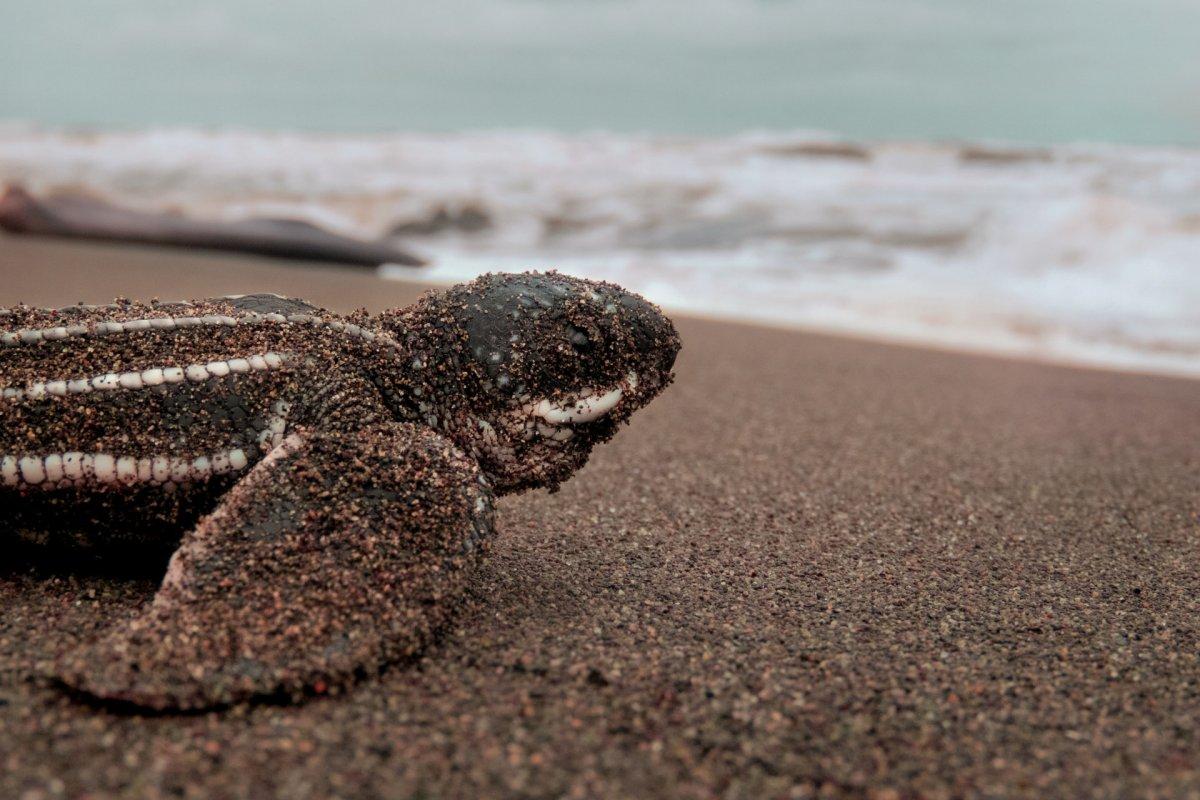
- Name: Leatherback sea turtle
- Scientific name: Dermochelys coriacea
- Conservation status:
While there are many species of sea turtles that can be seen in Gabon, I simply had to choose the leatherback sea turtle, also known as the leathery turtle, the luth, or the lute turtle.
It is an animal of records, being the heaviest non-crocodilian reptile and the biggest species of turtle, reaching incredible lengths of 2 m / 6.5 ft and weights of 600 kg / 1,322 lb!
10. White-backed vulture
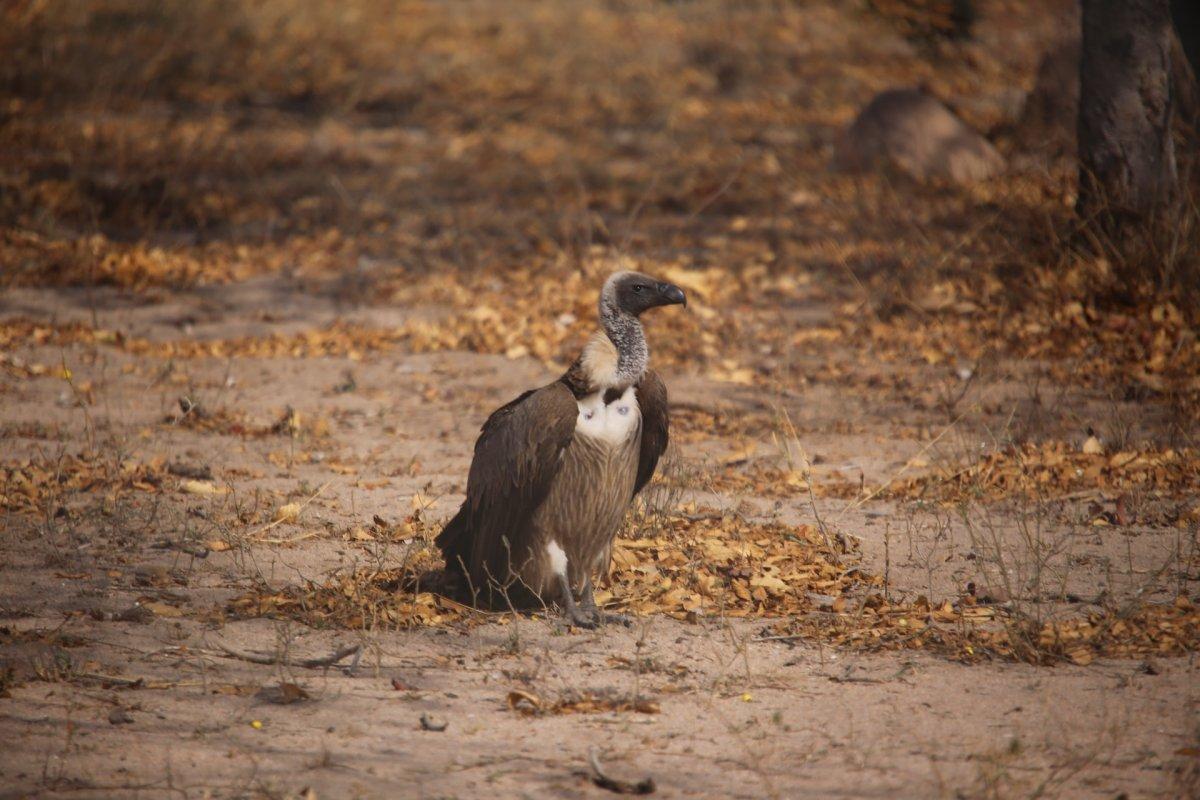
- Name: White-backed vulture
- Scientific name: Gyps africanus
- Conservation status:
The white-backed vulture, also known as the African white-backed vulture, is a species of Old World vulture native to sub-Saharan Africa. It is closely related to the European griffon vulture and is a typical vulture with very broad wings and short tail feathers.
It is a scavenger and feeds on carcasses it finds while soaring over the savanna. It is a very rare animal, currently considered critically endangered, due to the ongoing decline of its population, notably due to poisoning.
11. Crowned eagle
- Name: Crowned eagle
- Scientific name: Stephanoaetus coronatus
- Conservation status:
The crowned eagle, also known as the crowned hawk-eagle or the African crowned eagle, is a species of a large bird of prey native to sub-Saharan Africa. It inhabits woodlands and forests and majorly feeds on more or less small mammals.
In terms of the weight of its prey, the crowned eagle is considered the most powerful eagle on the continent, being able to lift mammals such as the bushbuck that can weigh up to 30 kg / 66 lb!
12. Hippopotamus
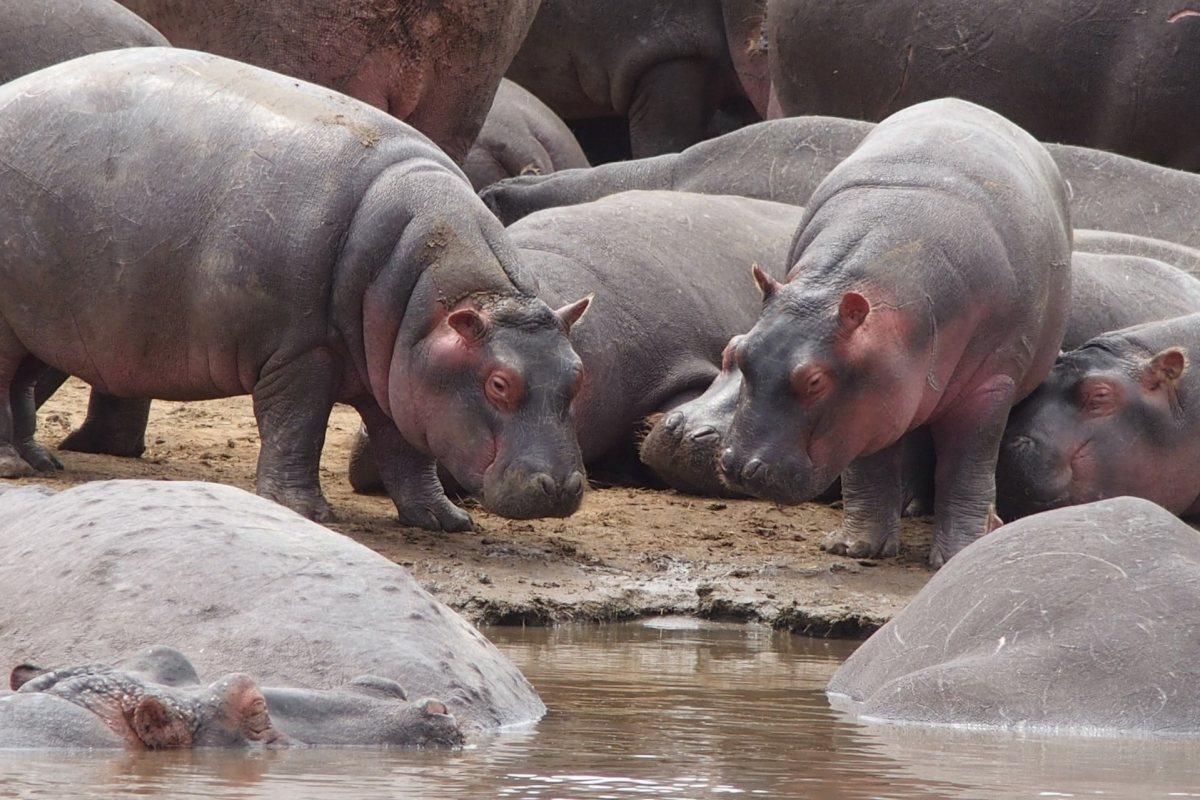
- Name: Hippopotamus
- Scientific name: Hippopotamus amphibius
- Conservation status:
The hippopotamus used to be found in all of sub-Saharan Africa, and even up the Nile and into the Mediterranean coastline, but its range is now extremely scattered and small, across tens of countries. It is a large semi-aquatic mammal and the third-largest land mammal after the elephant and the rhinoceros.
Though it does not look like it, the hippo is one of the most dangerous animals in the world because of its highly unpredictable and aggressive behavior!
—
So there you have them, these were my 12 wild animals in Gabon. I hope you enjoyed this list and that you learned something new today.
In case you want to learn more about Gabon wildlife, feel free to keep reading, as I still have lots of things to tell you about:
Endangered Animals of Gabon
This is definitely the saddest part of the list, but it is essential to raise awareness. Because of this, let’s go through the list of endangered animals in Gabon.
Here are the animals in danger of extinction in Gabon.
- None
- Great hammerhead
- Smalltooth sawfish
- White-headed vulture
- African forest elephant
- Lusitanian cownose ray
- and 17 more…
- Chimpanzee
- Whale shark
- Gray parrot
- White-bellied pangolin
- Angular roughshark
- and 47 more…
To see the full list of endangered species in Gabon, head over to the International Union for Conservation of Nature’s Red List.
What is the National Animal of Gabon?
The national animal of Gabon is the black panther.
The black panther is actually not an entirely different species, but a melanistic color variant of the jaguar and the leopard: it has excess black pigments, making it all black, but the typical rosettes of the large wild cats are still present.
Similarly to the leopard, and all other large felids, it is a symbol of power, freedom, and might.
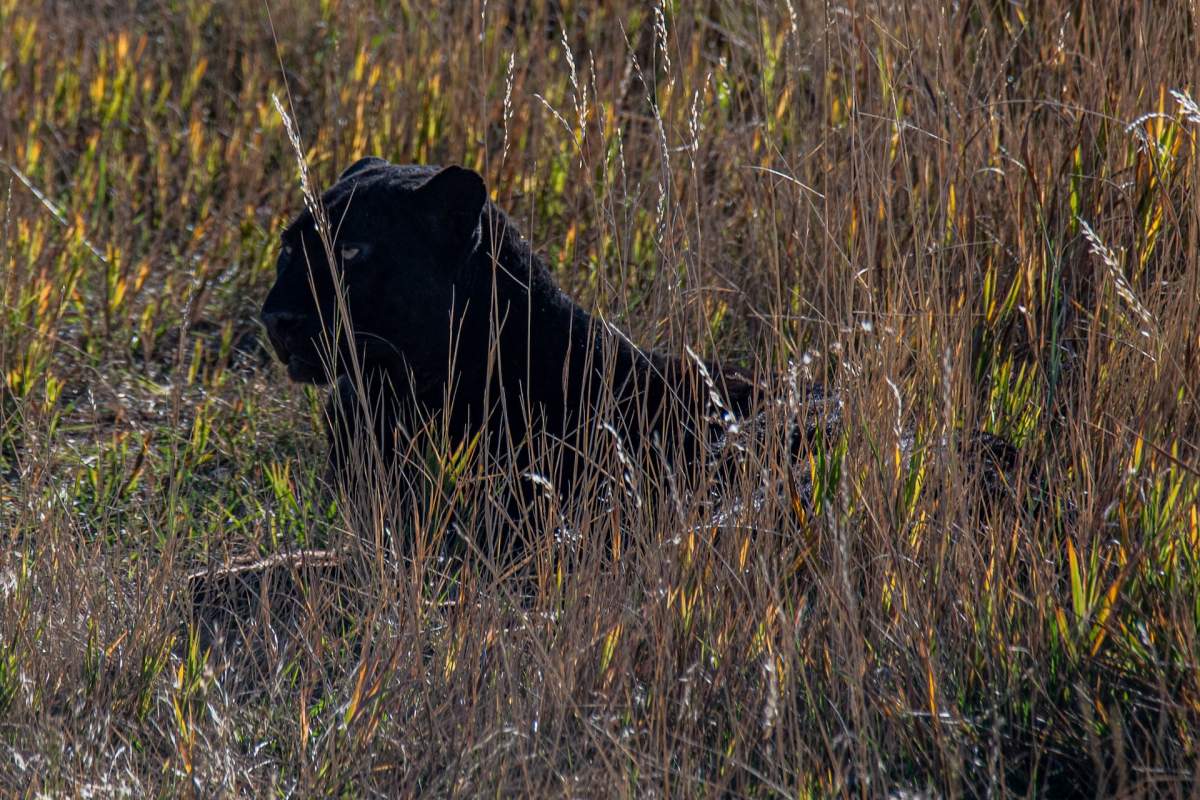
How Many Animals Native to Gabon?
What is the diversity of native animals in Gabon?
Let’s look at the total number of species of Chordata (mammals, birds, fishes, and reptiles).
Total number of animal species in Gabon: 2,239 (14,205 in total in sub-Saharan Africa)
How many gorillas are left in Gabon?
Though gorillas as a group are quite endangered, there are a handful of them remaining in Gabon: about 35,000 individuals. However, depending on the species, they are more or less threatened and helped by conservation programs.
Interestingly enough, the gorilla has up to 99 percent of the same DNA as us, making them the third closest living relatives to humans after bonobos and chimpanzees!
What are some animals you can see at the beaches in Gabon?
Now, this is obviously not the case in intense human activities areas, but in some wild, undeveloped coastlines, you might see some of the most beautiful animals of Gabon: elephants, hippos, and even leopards!
This is due to Gabon setting aside about 10 percent of its land for national parks, making it one of the greatest destinations for ecotourism in the entire continent.
More About Animals in the World!
Loved these Gabon animal facts? Want to see what animals live in other countries?
Then check out these posts:
Or click here to see ALL the facts up on the blog! Spoiler alert: there’s A LOT of them.
Share the knowledge! Click on the buttons below to share information about these famous animals in Gabon with your friends, and help them learn more about the world 🙂
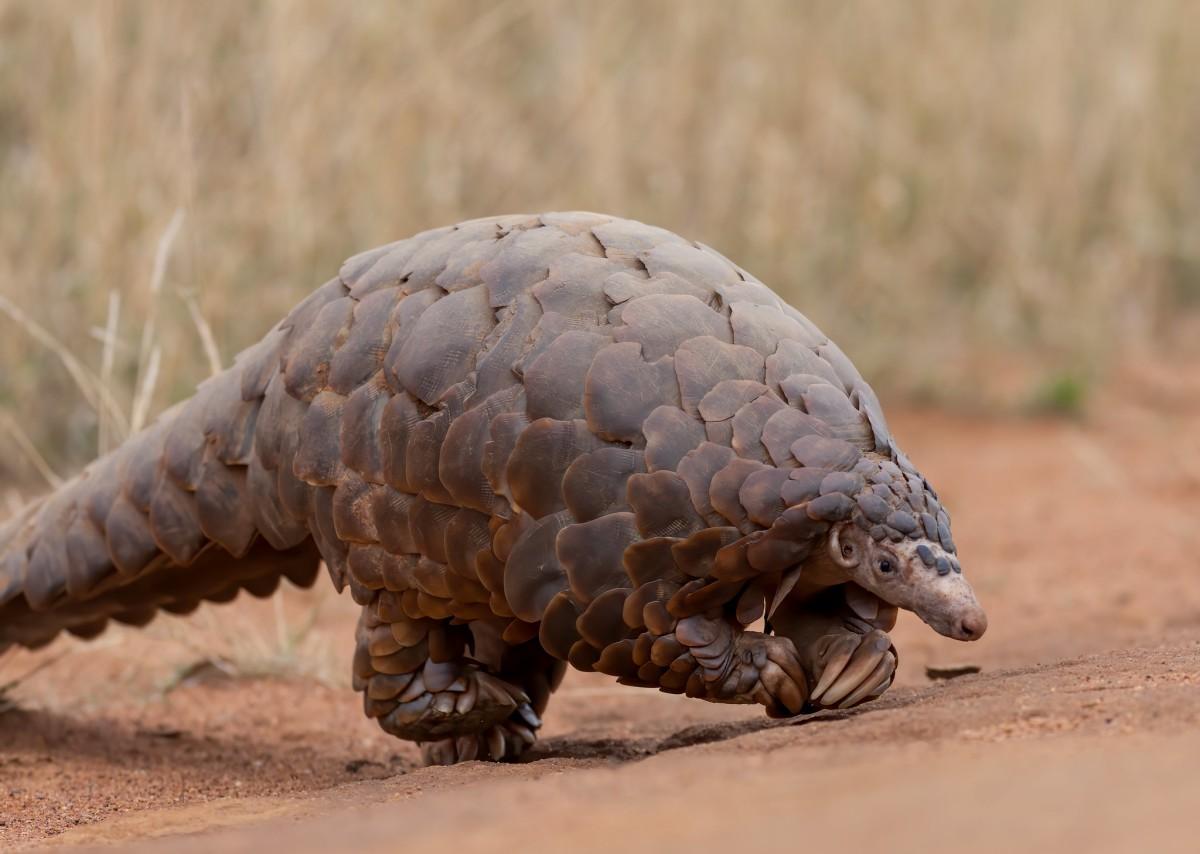
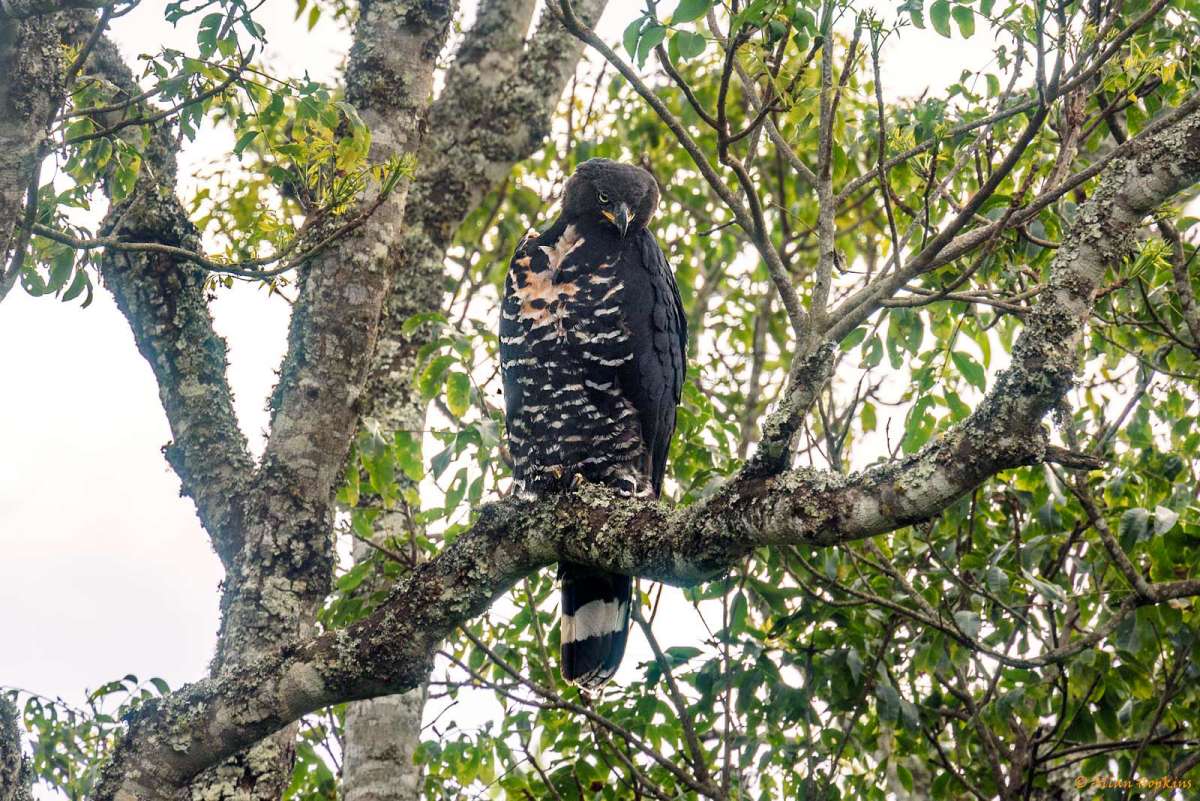

![15 Wild Animals in Macedonia [Wildlife in Macedonia]](https://www.kevmrc.com/wp-content/uploads/2022/06/15-wild-animals-in-macedonia.jpg)
![18 Wild Animals in Myanmar [Wildlife in Myanmar]](https://www.kevmrc.com/wp-content/uploads/2022/12/18-wild-animals-in-myanmar.jpg)
![15 Wild Animals in Iraq [Wildlife in Iraq]](https://www.kevmrc.com/wp-content/uploads/2022/06/15-wild-animals-in-iraq.jpg)